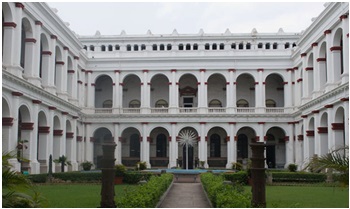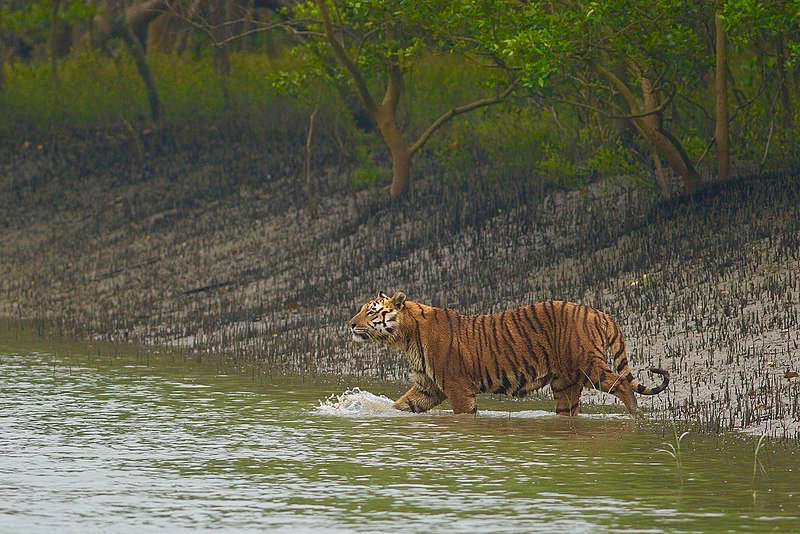Kolkata
A complete tourist and cultural guide

Kolkata, formerly known as Calcutta, is a city of rich heritage, intellectual fervor, and artistic brilliance. As the capital of West Bengal, it blends colonial history with modern vibrancy, offering a unique mix of grand architecture, literary traditions, delectable cuisine, and warm hospitality.
Wiki Link: Kolkata Wikipedia Page
Must-Visit Attractions in Kolkata

Victoria Memorial
A stunning marble monument built in memory of Queen Victoria, surrounded by lush gardens and museums.

Howrah Bridge
An iconic cantilever bridge over the Hooghly River, best experienced at sunrise or sunset when the city buzzes with life.

Dakshineswar Kali Temple
A sacred Hindu temple dedicated to Goddess Kali, where the mystic Ramakrishna Paramahamsa once worshipped.

Indian Museum
India’s oldest and largest museum, featuring ancient artifacts, fossils, Mughal paintings, and Egyptian mummies.
Major Attractions Nearby Kolkata

Sundarbans National Park
A UNESCO World Heritage Site, home to the Royal Bengal Tiger and dense mangrove forests.

Shantiniketan
Rabindranath Tagore’s abode, known for Visva-Bharati University and its serene cultural ambiance.

Bishnupur
Famous for terracotta temples and classical music heritage.

Digha & Mandarmani
Popular beach destinations for a quick seaside getaway.
Things to Do in Kolkata
Immerse yourself in the soulful chaos of India’s cultural capital, where colonial trams rattle past vibrant markets, fragrant food stalls tempt with mishti doi and kathi rolls, and evenings come alive with fiery political debates in century-old coffee houses. From the spiritual grandeur of Durga Puja pandals to the intellectual buzz of College Street’s book markets, Kolkata offers unforgettable experiences that blend heritage, art, and Bengali warmth at every turn.

Attend Durga Puja Festivities
Experience the grandest festival in Kolkata, where the city transforms into an open-air art gallery with dazzling pandals.

Take a Tram Ride
Kolkata is the only Indian city with operational trams—ride one for a nostalgic journey through its streets.

Explore College Street (Boi Para)
The world’s largest second-hand book market, a paradise for bibliophiles.

Cruise on the Hooghly River
Enjoy a serene boat ride while admiring Kolkata’s ghats and colonial structures.
The Performing Art of Kolkata
Kolkata is India’s cultural capital, home to Rabindra Sangeet (Tagore’s music), legendary Bengali cinema (Ray, Ghatak), and vibrant folk traditions like Baul music and Jatra theater. The city celebrates classical dances, revolutionary Bengali Natok (drama), and intellectual adda culture. From Durga Puja’s artistic pandals to historic coffee house debates, creativity flows through Kolkata’s soul.

Rabindra Sangeet

Nazrul Geeti

Baul Music
Kolkata’s musical heritage is as diverse as its culture, blending classical, folk, and modern styles. From the soul stirring Rabindra Sangeet to the rebellious Nazrul Geeti, the city resonates with poetic melodies. The mystic Baul tradition and vibrant Adhunik Bangla Gaan showcase Bengal’s evolving musical journey, while classical Hindustani influences echo in its concert halls.

Rabindra Nritya

Chhau Dance

Kathakali
Kolkata’s dance traditions reflect its artistic soul, from the temple grace of Bharatanatyam to the dramatic storytelling of Kathakali. Rabindra Nritya weaves Tagore’s poetry into movement, while the energetic Chhau martial dance adds a tribal vibrancy. These forms thrive in festivals, theaters, and the city’s creative pulse.

City Vibes – The Soul of Bengal
Kolkata pulses with an electric energy that blends intellectual fervor, artistic rebellion, and passionate politics. Its soul lives in the smoke-filled coffee house addas, where poets, students, and revolutionaries debate everything from Marx to Tagore. The city’s walls echo with poetry recitals, street theater protests, and the strumming of Baul musicians at Maidan. By day, colonial-era trams rattle past bustling markets; by night, the glow of Durga Puja pandals and indie music cafes keeps the city awake. Here, every chai stall is a salon, every graffiti a manifesto, and every sunset over the Hooghly feels like a scene from a Satyajit Ray film. Kolkata doesn’t just host culture—it bleeds it.
Heritage of Kolkata
Kolkata is a tapestry of colonial grandeur (Victoria Memorial, Writers’ Building), Bengal Renaissance (Tagore’s Santiniketan, College Street’s book stalls), and living traditions (Durga Puja’s artistry, Asia’s oldest tram network). From British-era landmarks to Chinatown’s hidden gems, the city preserves history in its crumbling mansions, bustling bazaars, and intellectual coffee-house debates—where every corner whispers stories of empire, art, and revolution.

Cuisine of Kolkata
A flavorful journey through melt-in-mouth sweets like rasgulla and sandesh, fiery street phuchkas, aromatic Bengali fish curries, and Kolkata’s iconic mutton biryani – where every bite tells a story of colonial legacies and homegrown culinary passion.

Macher Jhol & Shorshe Ilish
Hearty fish curries, Bengali staples.

Kosha Mangsho with Luchi
Slow-cooked mutton with fluffy fried bread.

Chingri Malai Curry
Creamy prawns in coconut milk.

Mughlai Paratha & Kolkata Biryani
Flaky bread and spiced rice with potato.
Shopping in Kolkata
From the vibrant chaos of New Market’s colonial-era lanes to College Street’s literary treasures, and from Gariahat’s handloom sarees to Kumartuli’s terracotta crafts – Kolkata’s markets are a treasure hunt of heritage, artistry, and irresistible bargains.

Bengali Handloom Sarees
Elegant Tant, Baluchari, and Jamdani weaves.

Terracotta Jewelry & Pottery
Bishnupur’s earthy craftsmanship.

Handmade Leather Goods
New Market’s durable classics.

Books from College Street
A bibliophile’s paradise.
Tourist's Handbook
The ideal time to explore the City of Joy is from October to March, when cool winter breezes (15-25°C) make heritage walks and river cruises delightful. Avoid the scorching April-June heat or July-September monsoons, though the rainy season paints the city in a uniquely romantic haze.
Beware of Pickpockets – Stay vigilant in crowded areas like markets, metro stations, and festival gatherings; keep valuables secure.
Use Registered Taxis/Ride-Sharing Apps – Avoid unlicensed cabs; insist on meters or pre-paid fares to prevent overcharging.
Stay Cautious at Night – Stick to well-lit, busy streets after dark; avoid isolated areas, especially near railway stations.
Street Food Smarts – Enjoy Kolkata’s delicious chaat and phuchka, but opt for busy stalls with high turnover to ensure freshness.
Respect Cultural Norms – Dress modestly near religious sites, and avoid filming strangers without permission—especially during rituals.
Monsoon Precautions – Carry an umbrella and waterproof footwear in rainy season (June–Sept); flooded streets can be hazardous.
Emergency Contacts – Save local numbers (Police: 100, Tourist Police: +91-33-2214-6600) for quick assistance if needed.
Kolkata offers diverse transport options—take a nostalgic heritage tram for short hops, use the efficient metro for avoiding traffic, or flag down yellow taxis (insist on meters). For authenticity, try hand-pulled rickshaws in North Kolkata’s alleys, but opt for app-based cabs (Ola/Uber) at night. Walking is best in Park Street or College Street to soak in the city’s vibe.
Taxi Meter Tricks – Insist on meter use or ride-sharing apps to avoid inflated fares.
"Special Puja" Donation Scams – Politely decline unsolicited temple priests demanding money.
Fake Tour Guides – Hire only government-approved guides near Victoria Memorial/Howrah Bridge.
College Street Book Scams – Check publication details before buying "rare" antique books.
Overpriced Handicrafts – Compare prices at New Market before purchasing sarees/leather goods.
Counterfeit Sweets – Buy mishti from reputed shops (KC Das, Balaram Mullick) to avoid adulterated products.
Kolkata Blogs
- Kolkata Cultural guide
- Places to visit in Kolkata
- Places to visit nearby Kolkata
- India’s most popular destination
- India’s archaeological marvels
Recommended articles
- West Bengal Cultural Guide
- Must-Visit Places in Kolkata
- Best Day Trips from Kolkata
- Kolkata’s Famous Food Trail
- Kolkata’s Colonial Heritage Walk
- Shopping Guide to Kolkata
- Kolkata’s Festival Calendar

